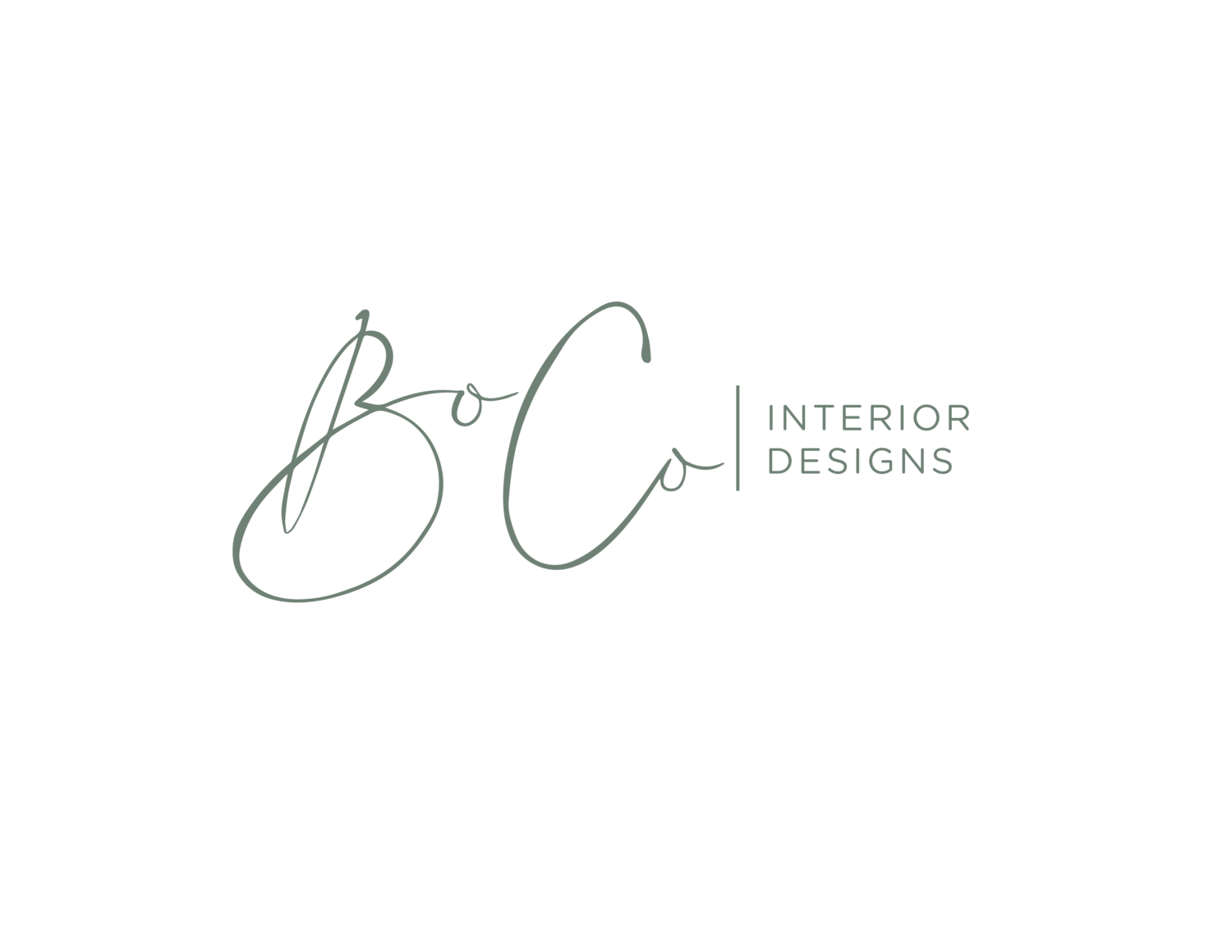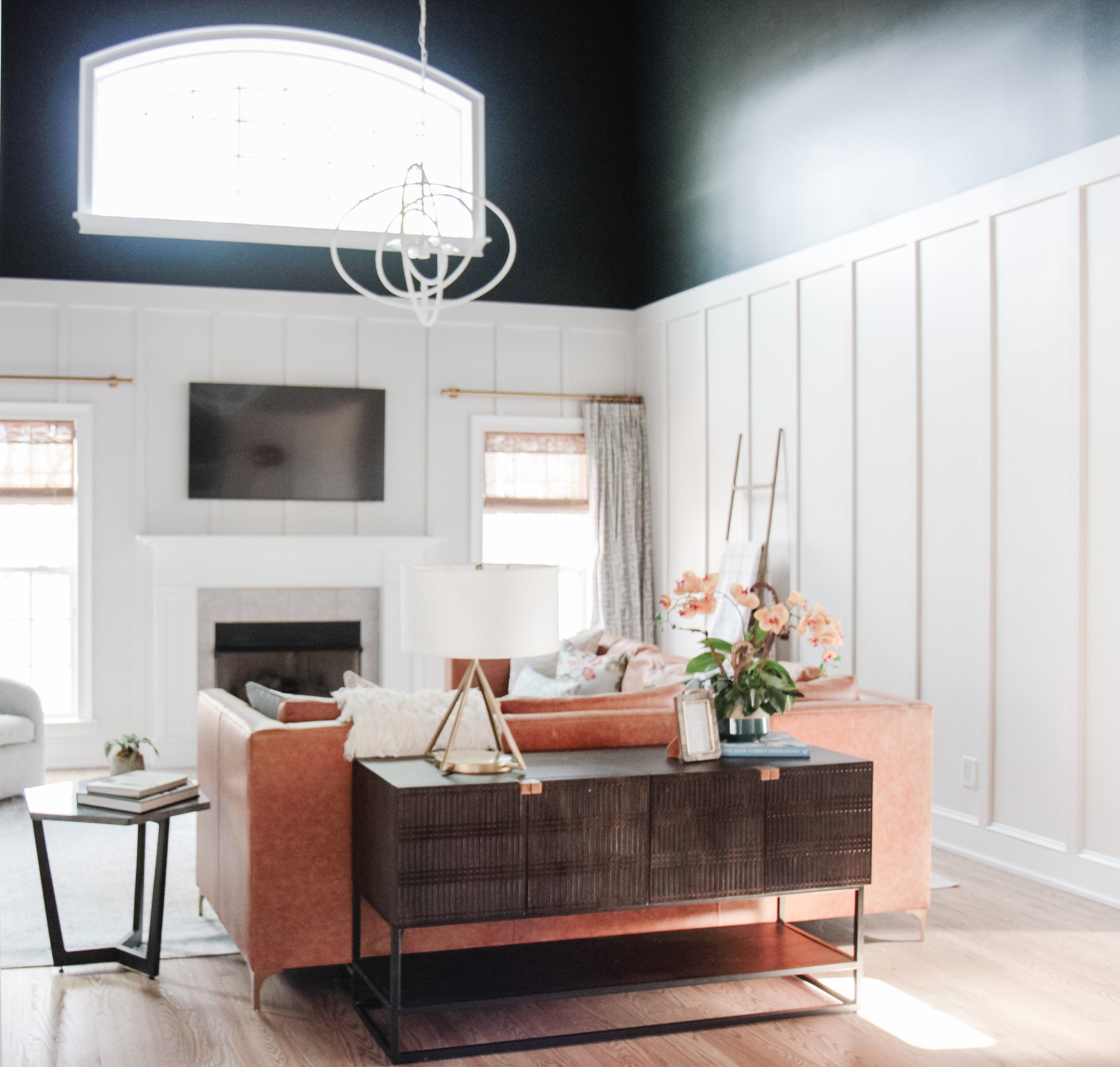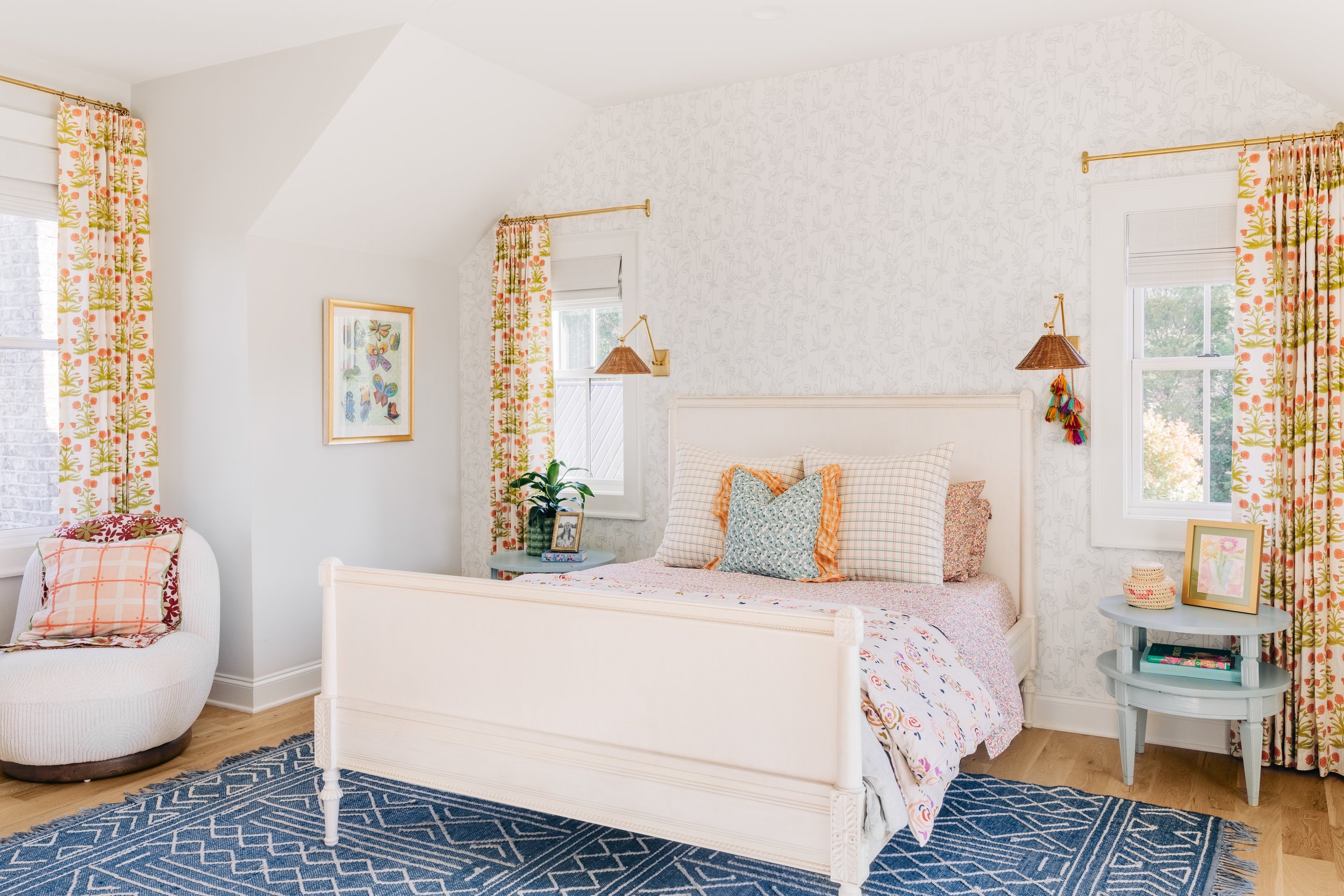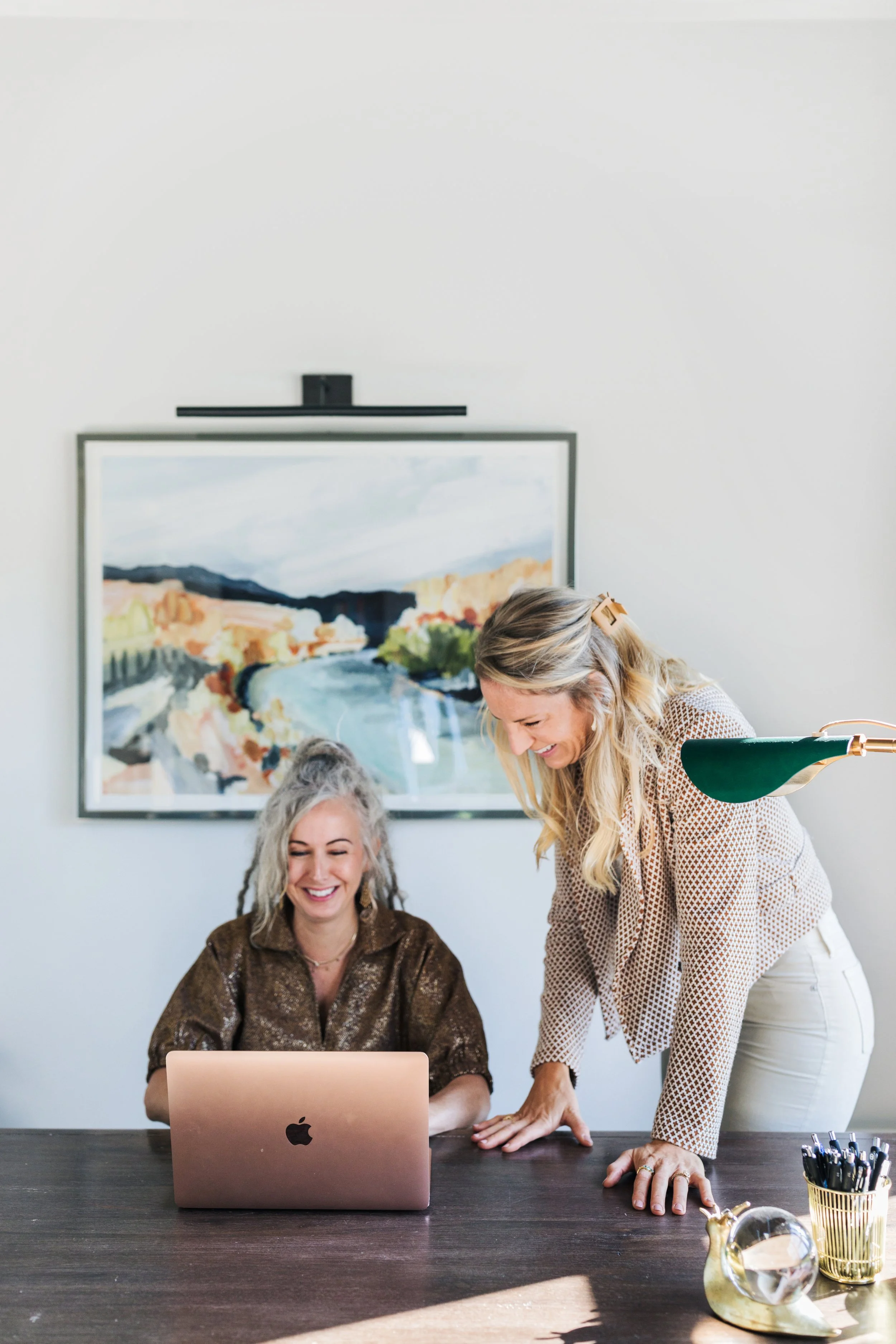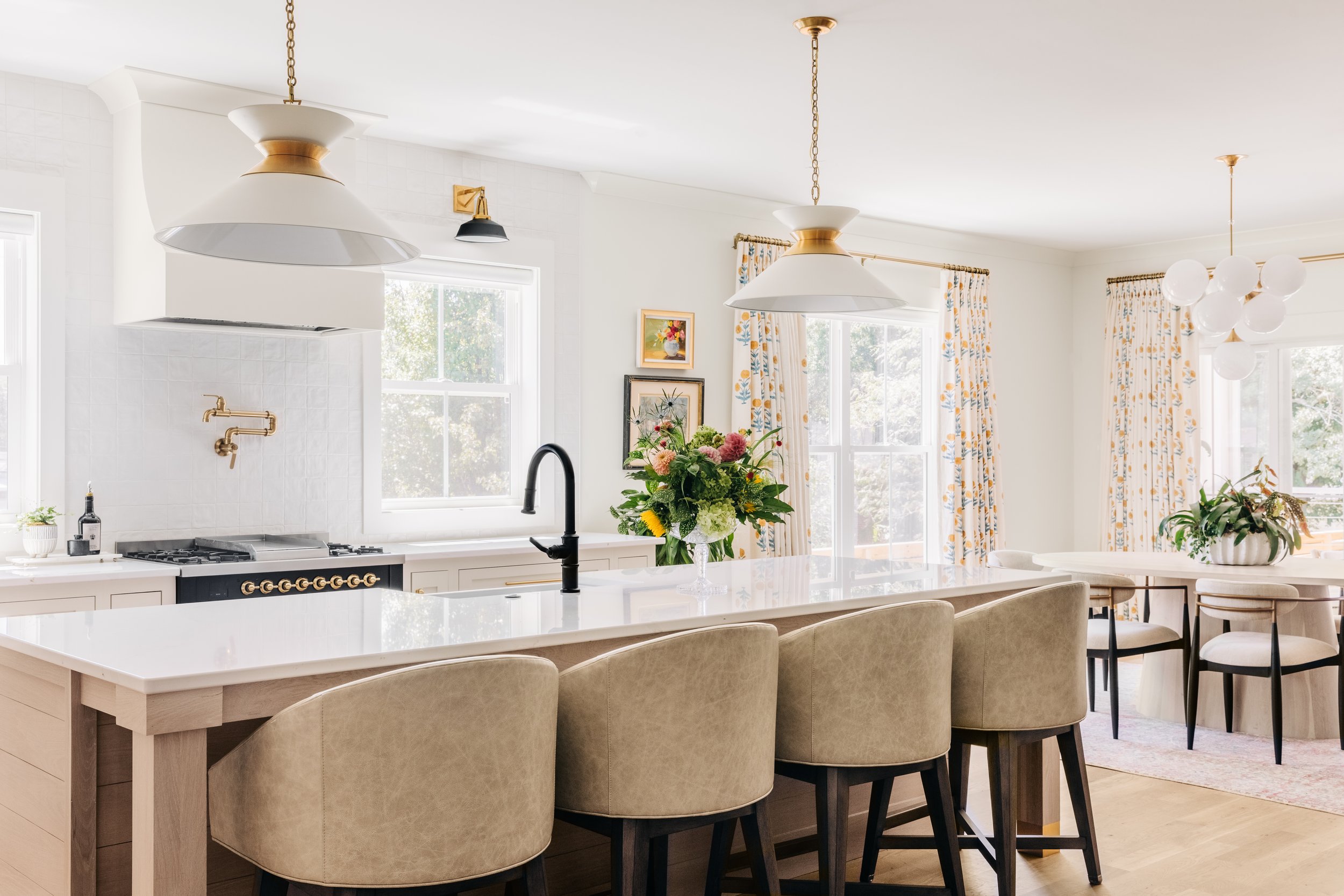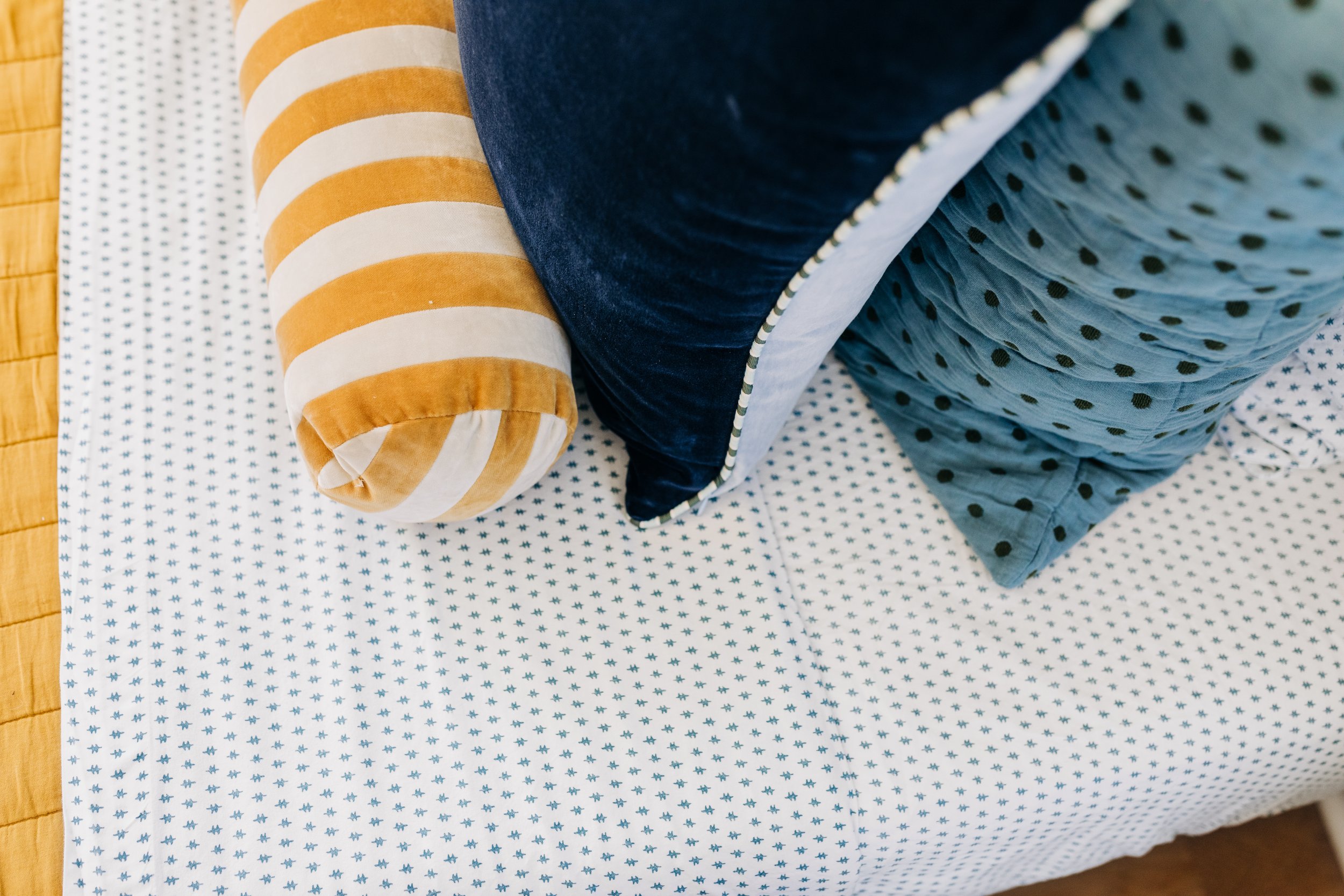
Interior Design Concepts
Interior design concepts help decorators and designers deliver timeless interiors. BoCo Interior Designs walks you through the 7 Principles of Interior Design, as well as the 7 Elements of Interior Design—while giving you examples for each concept. Whether you’re building, decorating, or remodeling kitchens, bathrooms, living rooms or bedrooms, these interior design concepts offer a satisfying well of ideas for your next interior design project.
And if you’re in the Upstate, and want interior design, call or text Grace at (864) 556-3922, email at bocointeriordesigns@gmail.com or click “Get Started” for a free estimate.
7 principles of Interior Design
Let’s start with the 7 principles of interior design:
Balance
Unity
Rhythm
Emphasis
Scale and Proportion
Contrast
Details
Balance
Having a good sense of balance in a space provides harmony and visual stability in your room. Balance applies to the smallest details like how to decorate a bookshelf, and to the bigger projects like kitchen remodeling, renovations, and custom home interior design. A well-balanced room will have a sense of equality across the elements, with no single component dominating the space. There are three types of balance that establish any interior design concept:
Symmetrical Balance
Symmetrical balance is a straightforward way to create balance. This method entails dividing your space into two equal parts and making sure that they reflect each other. For example, a bedroom with a bed in the center and two identical nightstands on either side utilizes symmetrical balance.
Asymmetrical Balance
Asymmetrical balance is a contrasting alternative to symmetrical balance. Different shapes and sizes can be used in your space while still looking balanced and cohesive. For example, rather than having two identical sofas on each side of a living room, a sofa and an armchair can be used instead to create a visually interesting contrast between sizes.
Radial Balance
For a more complex approach to balance, radial balance utilizes a focal point in the center of the design and creates a circular effect with the way the other components are arranged around it. The focal point can be anything from a fireplace to a chandelier. This style of radial balance draws the eye to the center of the room where the focal point is located.
Unity
Unity is an essential aspect of interior design for a harmonious and cohesive space. This can be achieved in many ways, such as using complimentary colors, certain shapes, patterns or specific elements like roman or roller shades, or custom wallpaper, that all tie into a common theme. The main way to achieve unity in a room is to ensure that there are no aspects that clash with each other or look jarring or out of place.
Moving beyond the scope of a single room, unity can be achieved on a larger scale throughout your entire home by finding a style or theme that you can adhere to. This theme could be something like a certain color palette that you weave through all of the rooms. While each room can have its own unique aspects and components, making sure all of these link back to a specific aesthetic or design will create a sense of unity in the home.
Rhythm
Rhythm isn’t just for music — it is also an important aspect of interior design. This can be implemented in a space in a variety of ways, such as repetition, transition, progression, or contrast. The most common way of utilizing rhythm in a space is to repeat similar shapes, patterns, or textures throughout the space. Rhythm can be implemented in each room and throughout the home as a whole. This rhythm can be achieved in many different ways, such as using the same finishes or hardware throughout your kitchen or bathroom, or similar furniture styles throughout the home.
Emphasis
The principle of emphasis in interior design involves drawing attention to a certain aspect of the room by using an accent such as color, pattern, or texture. This principle works particularly well in combination with radial balance, as they both work to focus in on a central point in the room. Color is a great tool to utilize to create emphasis. Painting a feature wall a bold color, or bringing accents of vibrant colors to a certain area can really transform a room.
The same goes for pattern, which works beautifully in kitchens and bathrooms, perhaps on a backsplash or tiled floor. Texture also ties in with this, as rougher and three-dimensional textures stand out more than smooth and flat ones. Using tile or brick can draw the eye to a certain area and emphasize a focal point in the room. Read more about the 7 elements of interior design below, including pattern and texture.
Scale & Proportion
The scale and proportion of the objects in your room is something that is extremely important and is largely determined by the size of your space. For example, it is important to take into account the size of your room and the height of your ceilings and match your furniture and decorations to fit. As you’re working to achieve your vision, an interior designer may suggest renovations that allow you to scale accordingly, so it’s important to understand the difference between an interior designer and an interior decorator. A room with higher ceilings will benefit from taller furniture and focal points such as bookshelves, whereas these same pieces would overwhelm and overcrowd a smaller room.
Scale and proportion can also create a visually interesting space when experimenting with objects of different heights and dimensions. The height of your art pieces on the wall, potted plants, or shelving can add dimension and aid in cultivating a visually stimulating environment.
Contrast
Contrast is all about combining visually juxtaposing objects with each other to create a striking effect. Color is one of the easiest and most common ways to implement some contrast in a space, particularly using contrasting shades such as warm and cool tones. When experimenting with contrast, it is important to not go overboard! A little contrast is effective, but too much can create an overwhelming and chaotic environment. Selecting a few areas to implement contrast keeps a room visually interesting and gives it some definition.
Details
The finishing touches to a room are what really bring it together and show off your personal style. By focusing on small details and including specific things that you enjoy throughout the space, you are able to create an environment that is visually interesting and unique to you. These details can be anything, such as the patterns on your sofa cushions, kitchen and bathroom accessories and hardware, or even the door handles throughout your home. The color, texture, patterns, and design of these items add a personal touch to the space. The smaller details leave a much larger impact on a room than you’d expect, and really transform the space.
7 Elements of Interior Design
Let’s finish with the 7 elements of interior design:
Space
Line
Form
Light
Color
Texture
Pattern.
Space
Space is the framework for all interior decorating basics. Every design project begins with an assessment of the space or room in which you will create, design, or remodel. When space is filled with design elements it is called positive space. When space in a room is intentionally left empty it is called negative space. This first element of interior design helps a designer focus on the balance of positive and negative space. Start by visiting the space you’ll be designing and get the dimensions of the room as well as making notes about the angles, windows, doors, and walls that invite or inhibit movement.
Line
The second element of interior design focuses the eye on horizontal, vertical and dynamic lines. Horizontal lines are created in every positive space with furniture, cabinets, counters, tables, desks, shelves, wall hangings, and even lighting decor. Vertical lines are built into the negative space of any room with windows, doors, walls and flooring. When it comes to the basics of interior design, lines define the way a space flows, giving the eye a sense of where to move through any room. Dynamic lines, like diagonal and curved lines, create interest and draw attention to a specific area of the space. The combination of different lines in a room should work together to create stability, direction
Light
Natural and artificial light combine to comprise the fourth element of interior design. The interplay between man-made and organic lighting defines the mood of any room. More organic light creates openness and the perception of a larger space, while more artificial lighting creates intimacy and the perception of smaller spaces. Interior designers choose the color and textures of a space based on the availability of natural lighting or the necessity for artificial lighting.
Color
Color is another fundamental aspect of the 7 elements of interior design. Colors are often to unify the space, with furnishings and finishes that have complimentary tones. Even when color is used to create emphasis, there are interior decorating basics like the 60-30-10 color rule that help balance any space with a cohesive palette.
Texture
Texture is experienced visually and viscerally to the touch. Though subtle and overlooked, textures create spaces with history and permanence. Textures can define modern, contemporary, and architectural design and give spaces trendy or timeless appeal. Visual textures, like marble, create the illusion of physical textures, while actual textures, like cactus and velvet, are palpable and felt.
Pattern
The final element of interior design is pattern, which introduces repeating shapes, themes, and textures to create emphasis, contrast, and rhythm. Repetitive decorative elements can also unify a larger space and introduce scale and proportion. Patterns are particularly pronounced in fabric, wallpaper, tiling, and carpeting and typically accent a room in contrast to more neutral elements.
Interior Design Elements vs Principles
So, what is the difference between these elements and the principles we looked at earlier? The principles of interior design are guidelines that are used to create visually appealing spaces, whereas the elements of interior design are what are used to adhere to these principles. You can think of the elements of interior design as the physical tools or building blocks that are used when following the principles of interior design. For example, when focusing on the principle of contrast, you would be primarily using the elements of light and color.
Bottom line: both the principles and elements of interior design work together. Where the principles are general, overarching guidelines, the elements are specific components that are used to create designs within these guidelines. As you master the interior design principles, you’ll naturally understand what interior design elements fit into each space.
Interior Design in the Upstate
“BoCo is aware of time frames and when things need to be ordered or decided on to not hold up the contractors on your new build or renovation. They know about different aesthetics and could pull some new things that would be paired perfectly with the old. We have a modern farmhouse style with some rustic elements. Grace and Jenny were able to tie in all of those styles while mixing some antique elements in as well. BoCo will lead you in the right direction while truly making your space home.”
— Custom Home Build Greenville, SC | BoCo Interior Designs Reviews
Begin Your Design Process
Tell us about your project.

